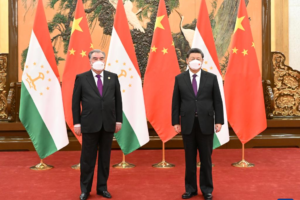The variety of cultures found in Indonesia is also influenced by the influx of foreign cultures, one of which is India .
The influence of Indian culture in Indonesia or the archipelago at that time began with trade relations that existed around the 4th to 15th centuries.
The strategic location of the region and also being a spice producing area means that Indonesia is often visited by other nations for trade.
Through this trade relationship, cultural acculturation or cultural mixing, including India, was formed.
The Influence of Indian Culture in Indonesia
Illustration. The influence of Indian culture in Indonesia, from art to architecture (iStockphoto/zodebala)
Compiled from the Indonesian History Module: Intersection of Local Culture and Hindu-Buddhist High School Ministry of Education and Culture (2017) , here are a number of influences of the influx of Indian culture on cultural development in Indonesia.
1. Fine arts and sculpture
The first acculturation of Indian culture with Indonesian culture was in the field of fine arts, carving and sculpture.
This can be seen from the carvings or reliefs carved on the walls of the temple. The reliefs on Borobudur Temple are sculptures of the Buddha’s history.
2. Building art
Temple buildings in Indonesia in general are a form of acculturation between elements of Hindu-Buddhist culture and Indonesian culture.
The statues in the temple building are embodiments of Buddha or gods. Parts of the stupa and temple are elements from India.
The form of temples in Indonesia, namely punden terraces, is an original Indonesian element.
3. Literary and literary arts
The entry of Indian culture into Indonesia also had a significant influence on literary arts culture in Indonesia. Literary art at that time took the form of poetry and prose.
Judging from its content, literature is grouped into three, namely legal books, speech (religious scriptures), and epics (heroics).
There are forms of epics that are very popular in Indonesia, such as Bharatayuda which was composed by Mpu Sedah and Mpu Panuluh.
4. Performing arts
The increasingly developed literary works, especially those originating from the Ramayana and Mahabharata, gave rise to the art of wayang kulit performance.
The story in the shadow puppet show comes from India but the wayang comes from Indonesia.
Apart from that, JLA Brandes believes that gamelan is one of the instruments among the original performing arts that was owned by Indonesia before Indian culture arrived.
Then, over the centuries gamelan experienced development with the inclusion of new cultural elements, both in terms of form and quality.
5. Belief system
Since preliterate times, Indonesian people have known about symbols that have philosophical meaning. For example, if someone dies, their grave is accompanied by several objects.
Among these objects are usually paintings of people riding a boat, which means that the spirits of people who have died will continue their journey to the afterlife.
People at that time already believed that there was life after death, namely as spirits. So the spirits of their ancestors are worshiped by living people.
After the arrival of Indian influence, belief in ancestral spirits did not disappear. An example can be seen in the function of temples or temples in India, namely as places of worship.
The temple is also a place for kings’ tombs or to store the ashes of deceased kings. This is a combination of the function of temples in India and the burial traditions or worship of ancestral spirits that already exist in Indonesia.
6. Architecture
Religious buildings such as temples were very well known during the Hindu Buddhist era. This can be seen from the Hindu heritage buildings, namely Gedungsongo Temple and Sewu Temple.
The monastery hermitage building is also a building with steps. It can be seen in several temples such as Tikus Temple, Jalayunda Temple, and Plaosan Temple.
The sacred building with terraces actually developed in the preliterate era, depicting a multi-level universe. Meanwhile, the top place is where the ancestral spirits (ancestors) reside.
Source : CNN
















